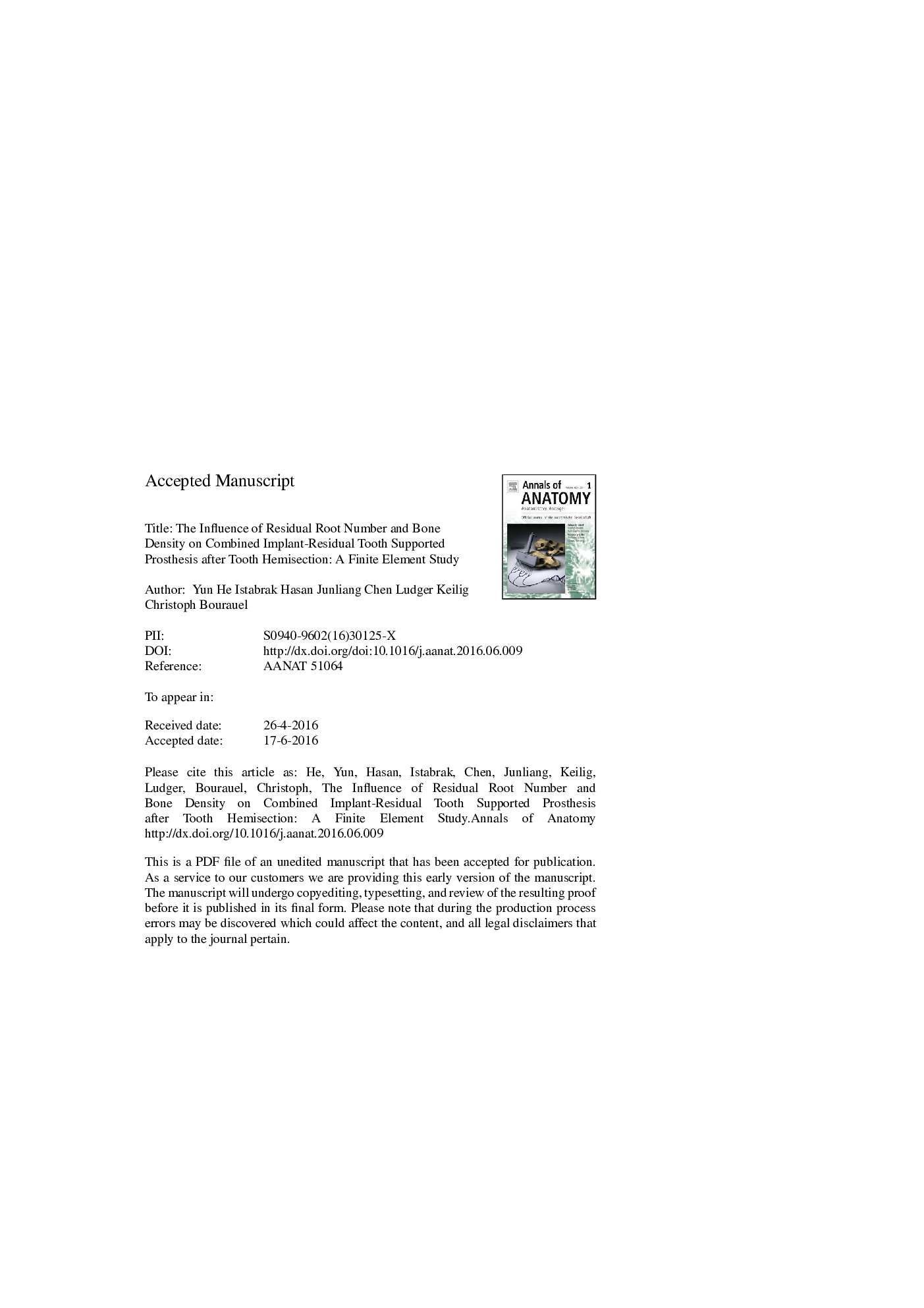| Article ID | Journal | Published Year | Pages | File Type |
|---|---|---|---|---|
| 8460595 | Annals of Anatomy - Anatomischer Anzeiger | 2016 | 18 Pages |
Abstract
The aim of the present study has been to analyze the influence of residual root number and bone density on the loading distribution of restorations combining implant and residual tooth after tooth hemisection using finite element analysis. Based on the image data of two patients, one has one distal root and the other has two distal roots in the mandibular right first molar, eight models were created (four models for each patient): a single crown was placed on the implant and residual tooth in two different bone densities; two separate crowns for the implant and residual tooth in two different bone densities. Vertical force of 100-N was applied on the crowns. The results show that the increase in number of residual roots decreased the magnitude of all biomechanical parameters. Higher values were observed in models with low bone density, especially in one distal root models. The maximum values of strains in spongious bone with the model (one distal root, low spongious bone density, a single crown was placed on the implant and residual tooth) even reached 9000 μstrain. From a biomechanical point of view, when two residual roots exist, a single crown placed on the implant and distal half of the molar or two separate crowns for them seem to be an acceptable treatment option, regardless of the bone density. If there is one residual root and the bone density is low, the prosthesis which combines implant with the root might not be used.
Related Topics
Life Sciences
Biochemistry, Genetics and Molecular Biology
Cell Biology
Authors
Yun He, Istabrak Hasan, Junliang Chen, Ludger Keilig, Christoph Bourauel,
